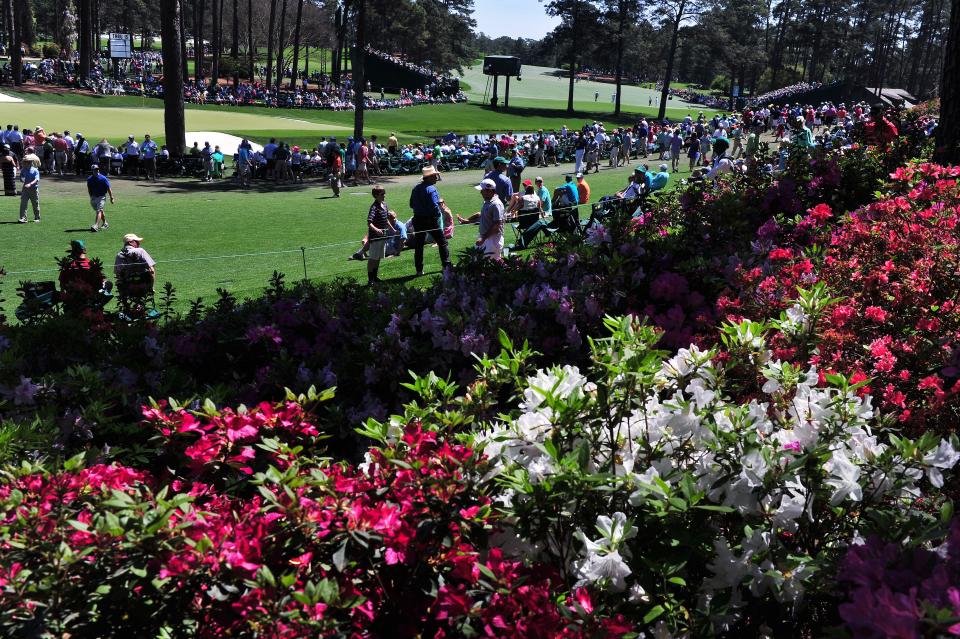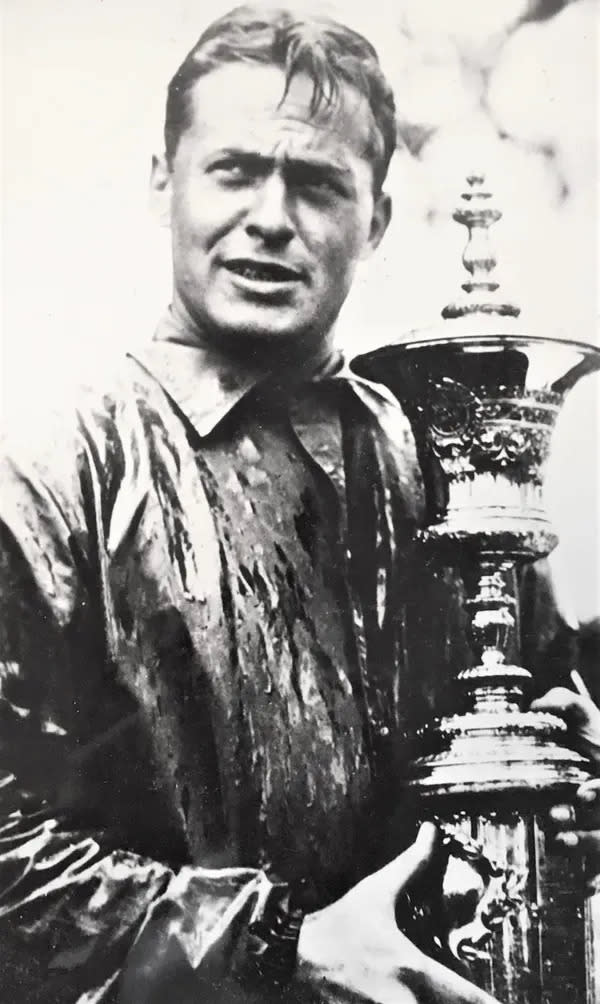To win the Masters, you pay a price Bobby Jones envisioned and endured nearly a century ago
Even a funeral can have beautiful surroundings.
That always comes to mind on a Masters Sunday, when one guy always survives it all, others litter the roadside along the way, and a few others, bless their hearts, inherit the looks of condemned men at a final sunset.
Unlike most other major championship venues, Augusta National draws many onlookers simply for its beauty at a time of year when much of the world is thirsting for the offerings of spring.
Fans of championship golf, however, are drawn by the human drama, which is in full bloom at Augusta because, despite all the pines and shrubbery, there’s nowhere to hide. Few in any sport stands as naked as a golfer before the sporting public.
In key moments when the shadows lengthen, facing a razor’s edge masquerading as a golf shot, when the only two possible outcomes are conquering hero or drunken sailor, you almost literally see a man scouring his throat for saliva and his lungs for air.
THE MASTERS AT 90 A decade-by-decade look at history, from Bobby Jones to Tiger Woods

It’s easy to assume all of this either happened organically — we’re talking about a former nursery and indigo plantation, after all — or through the hyping maneuvers of marketing magicians and a compliant modern media.
But you’d have to ignore the early groundstrokes of Bobby Jones, who not only dreamed of such a golf course, but perhaps saw the decades of drama unfolding ahead. By all historic accounts, it wasn’t just a golfing genius he possessed.
Bobby Jones' vision still highly visible at Augusta National
With renowned course designer Alistair MacKenzie in charge of the carving, Bobby was alongside to make sure the designer leaned equally in the directions of both risk and reward. If anyone knew the demands and range of emotions attached to championship golf, it was Bobby Jones — he couldn’t have foreseen today’s media landscape, but he knew what dramatic surroundings could do when coupled with dramatic moments.
Find old footage of Bobby, and you find a man of courtly manner and social warmth, but a man who knew self-induced torture due to what pressure does to a golfer. It’s possible Augusta National and the Masters might’ve never happened if he hadn’t successfully navigated the hell he willed himself through to win his famed Grand Slam in 1930.

You would label Bobby Jones a fatalist. He felt everything was predetermined, and he was just there to do his best while along for the ride, awaiting the discovery of that predestination. It was common for him to lose 15 pounds or more from his modest frame during a championship week, surviving on the occasional chicken sandwich for sustenance and pulls from a flask for calm.
At the 1930 British Open, a few weeks after winning the British Amateur, it seemed to all come to a head.
“This tournament has taken more out of me than any other I ever played in,” he told those waiting with him for the nearest pursuers to finish and fall short. “It’s quite too thick for me. I feel that I’m not strong enough to play in another one.”
The great golf chronicler of the age, Bernard Darwin, was among those with him and among those who surely would’ve concurred.
Alone in a crowd - Bobby Jones in the 1927 Open on the 15th tee at St Andrews pic.twitter.com/gOVWRLjZS2
— Simon Haines (@Hainesy76) September 25, 2022
“Seeing him nearly past speech,” Darwin wrote, “I thought that the time had come to call a halt and that this game could not much longer be worth such an agonizing candle.”
But after he came home and endured a ticker-tape parade in New York City, he’d continue chasing his destiny, with a self-promise of retirement from championship golf once it was over, Grand Slam or not, even at the young age of 28.
Masters pressure can pay off, but it's never easy
In his thorough account of Jones’ summer of 1930 — “The Slam” — Curt Sampson paints the picture of a sporting giant whose current glory (13 majors over a seven-year stretch) and future dreams (Augusta, The Masters) came at a price.
“Although he looked like a million … the pressure of living up to expectations just about killed him,” Sampson writes. “Alcohol, insomnia, and two packs a day aged him 10 years in 12 months. Before the morning rounds of his final tournament, the locker room attendant watched in awe as Jones raised a trembling glass of corn whiskey to his lips.”
Chicken on white bread was all the belly could handle, while nips from the bottle kept the demons away between the morning and afternoon rounds, and helped bring sleep at night.
“Each week he looked more and more like Big Bob, his baggy-eyed and weather-beaten father,” Sampson writes. “For the most part, Jones’ success and stoicism obscured his torment.”
📍 Merion Golf Club
Bobby Jones completed the Grand Slam in 1930 with his 8 and 7 victory over Eugene V. Homans. Jones would retire shortly after his win cementing his legacy as the greatest amateur golfer in history. #BobbyJones #TheCloverWhiskey pic.twitter.com/xHI9ZNfPBZ— The Clover Whiskey - Bobby Jones Collection (@CloverWhiskey1) September 27, 2021
Today’s Masters contenders are a few generations down the line from Jones, but his familiarity with the game’s demands, and his desire to pass them along, is evidenced each spring about this time.
Very few ever made these things look easy, and fewer yet had the answers for any real length of time. They all know this, and therefore know they can’t afford to kick away opportunities.
And that’s why, when facing one of Bobby Jones’ desired risk-versus-reward tests, blanketed by impossible azaleas and cloud-scraping pines, they look like they’d rather be anywhere else on Earth.
— Reach Ken Willis at ken.willis@news-jrnl.com
This article originally appeared on The Daytona Beach News-Journal: Sunday pressure at the Masters was predetermined by Bobby Jones

